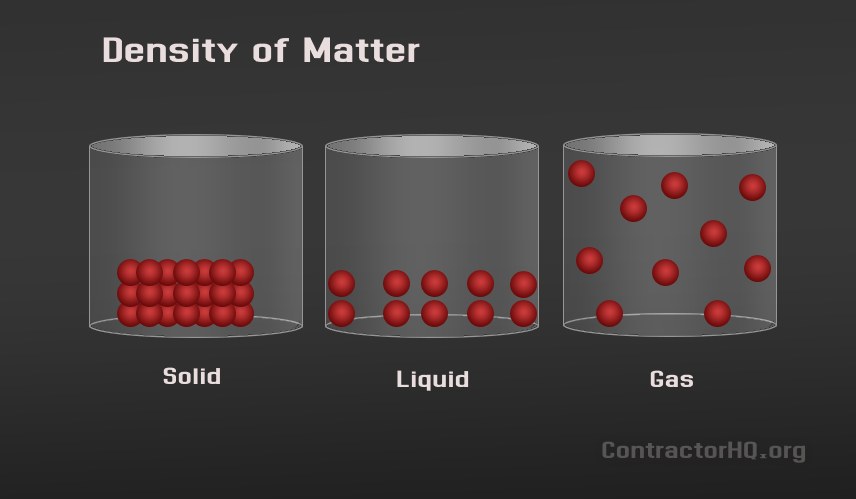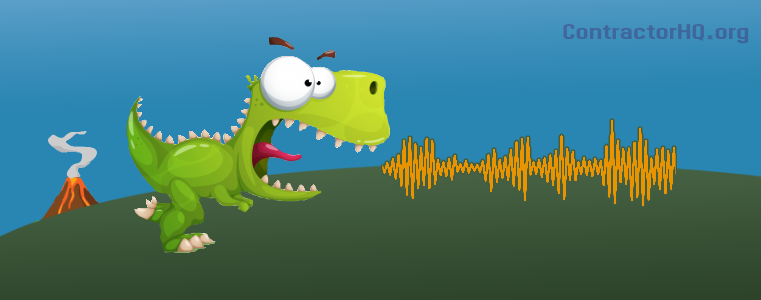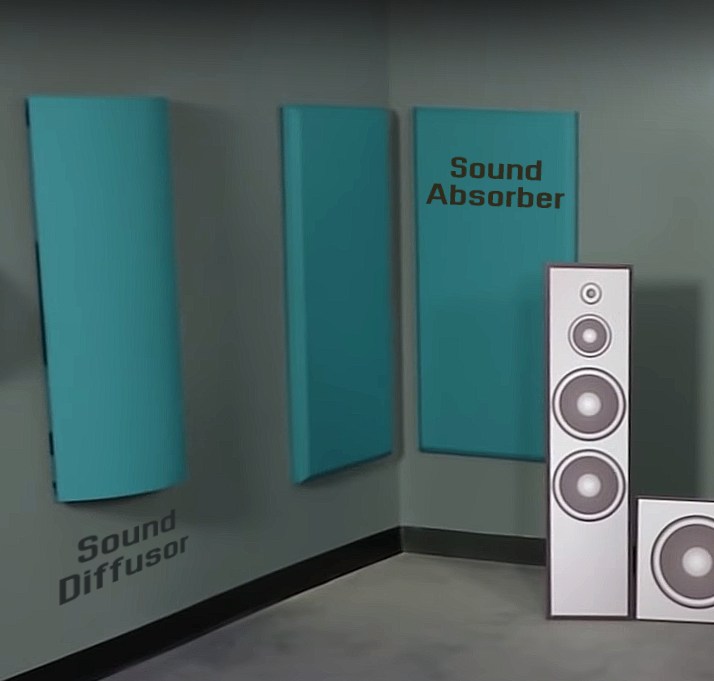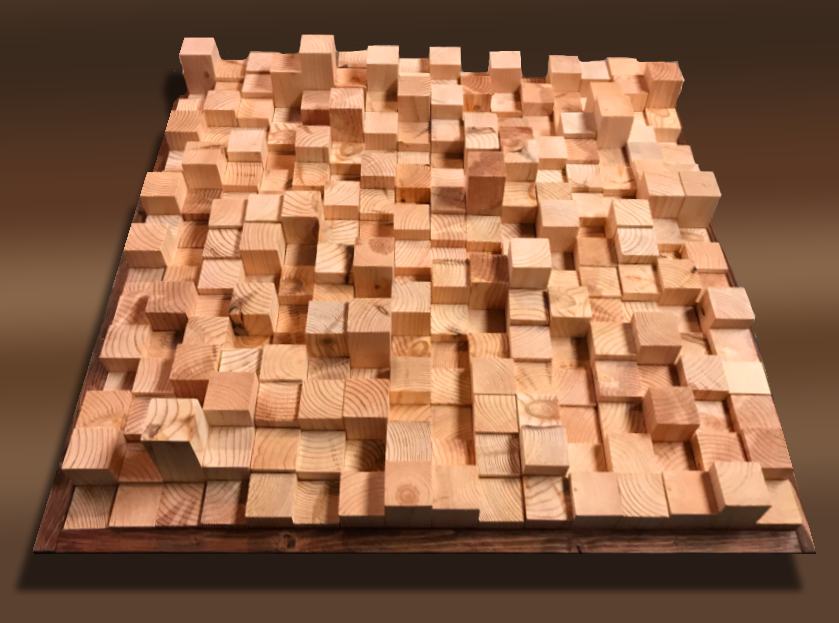The Science of Soundproofing
Soundproofing is all about cutting down on unwanted noise. Let's look at how sound moves so we can better understand how to contain it.
Sound Speed
Sound moves at different speeds depending on what medium it's using for travel. The more dense the medium, the faster it moves. Solids, like metal, are dense and therefore sound waves move through them quickly. Liquids are also pretty dense, so sound travels through them more quickly than they would move through air. Air is a gas, so the molecules are not as tightly packed as in liquids or solids. This means sound moves more slowly through air than through solids or liquids.

Why does sound move more quickly through dense materials? Because there are more particles available to pass the sound on.
Consider this experiment. If you hit the end of a metal bar with a mallet, the particles at the end of the bar will push forward into the particles right next to them. Those particles will then push forward into the next set of particles. This continues on as the energy moves throughout the bar. If you repeated this experiment with air particles, you would see something different on a molecular level. There is more space between each molecule. This means that when you apply force to air, there is more time before it can move far enough to effect the air molecules next to it.
Imagine a densely packed neighborhood. You tell the first household that they need to pass a message on to their neighbor, so they walk next door and tell them. The first household walks one door down and passes the message on to their neighbor. At this pace, your message could be passed through 10 houses in a matter of minutes. Now imagine the same experiment, but in a rural community where homes are miles apart. It might take 20 minutes of walking to get your message from the first house to the second house.

With that analogy in mind, densely packed matter is like the densely packed neighborhood. A sound wave can be transmitted from one molecule to the next more quickly when the molecules are close together. Thus, sound waves travel more quickly through solids and liquids than they do through air.
Sound Distance
Now things get a little bit more tricky. Although waves travel more quickly through a solid, it doesn't mean they travel farther. Remember, sound is kinetic (moving) energy. As one molecule bumps into the next molecule, most of its energy is passed on. However, not all of the energy is passed on. Because of friction, some of the kinetic energy turns to heat energy. Also, in the case of the metal bar, the molecules along the side of the bar are sitting next to air molecules. Some of the kinetic energy moves from the metal into the air. When this happens, you hear sound coming off the bar each time you hit it.
If this doesn't exactly make sense, you can think of it another way. You've got a box full of 100 pieces of energy. You can divide up that energy among densely packed metal molecules, or you can divide it up among more loosely scattered air molecules. If you give it to the metal, it will be dispersed quickly, because the metal molecules are sitting so closely to each other. However, it will only cover a short distance before before running out. There are more metal molecules to share that energy with, so you don't move very far before your box is emptied. Now try dividing up another box of 100 pieces of energy to the air molecules. It takes a little longer to get around from one molecule to the next, because they're sitting so far apart. However, you covered more ground before running out of energy.
Energy moves around all the time, but it doesn't always stay in its original form. Electricity can be converted to kinetic energy in a speaker. The speaker's motion creates sound waves as it agitates the air around it. Those sound waves are caught by a microphone where they are converted back into kinetic energy as they vibrate the microphone's diaphragm. The motion of the diaphragm is converted back into electricity. Some of that electricity turns to heat, which warms the air around it, making the air molecules move around more quickly. The point of this illustration is to show that although sound can travel, it doesn't travel with perfect efficiency. It is changed from one form to another as it moves from one object to the next. Otherwise, ancient sound waves from a burping dinosaur would still be resonating through the air today.

Soundproofing a Home
There are two types of sound you can address in a home:
- Airborne Sound - These are just regular sound waves traveling through the air and bouncing off walls.
- Structural Sound - These are better described as vibrations in the structure of a home. For example, if you have a room above a garage, you probably get significant structural sound each time the garage door opens and closes.
Stopping Sound
One of the big goals in soundproofing is to stop sound traveling from room to room. This is every parent's dream. Kids can do all their kid stuff, like listening to their music out loud, practicing the drums, playing video games, and laughing with siblings and friends. Parents can do parent stuff—like filing their taxes—without their kids having to listen.
The key to stopping sound from moving is MASS. As we mentioned earlier, dense materials can conduct sound quickly, but they don't conduct it very far. The more densely packed molecules you have, the shorter the distance sound can travel. This is why highways don't use vinyl fences as sound barriers, but instead use thick concrete. Inside your home, double drywall, extra insulation, and other mass-adding materials can dramatically cut down unwanted sound travel.
If you're trying to cut down on structural vibrations, rubber bushings may be your answer. A perfect example is garage door railings. Because they are metal, they efficiently move sound waves across a short distance. Those waves travel in the form of vibrations throughout the structure of adjacent rooms. By using a material that is less efficient at conducting sound waves, you can cut down on the vibration carried throughout the house. Placing rubber bushings between the ceiling and the metal garage door railings will have a huge impact on cutting down the unwanted noise.
Improving Sound Quality
Sound proofing isn't just about keeping a room quiet. It can also be about improving the quality of sound inside that room. If you've got a home theater, this is critical for that realistic movie-quality sound you're after.
There are two types of sounds you'll hear while listening to speakers:
- Direct Sound - The sound that travels directly from the speak to your ears.
- Indirect Sound - The sound that bounces off of walls, the ceiling, the floor, or furniture before arriving at your ears.
As far as your room layout goes, the key to great sound is cutting down reflected sound waves. This is because the indirect waves will bounce around the room, and eventually collide with direct sound waves, causing distortion.
To cut down on sound reflection, think about how you'd cut down on light reflection. The principles are quite similar. If you have a smooth, flat surface, like a glass table, a laser light would reflect off it very efficiently. Likewise, smooth surfaces like flat walls, wooden floors, and windows will reflect sound very efficiently. They key is to break up that smoothness, and you have two great tools to do it:
- Absorbers - An effective sound absorber will contain many holes, like you'd see in a foam mat. This allows sound waves to enter, but makes it difficult for them to escape. It's like a bee trap for sound waves.
- Diffusers - A diffuser doesn't trap the sound. Instead, it redirects it, which makes it less powerful and less audible.

Sound Absorbers
These are available in panels that can be hung on walls and ceilings. In most home applications, this should be sufficient.
In more extreme scenarios, like building a recording studio, thick foam pieces are used to deaden noise as efficiently as possible. If they are used on every wall surface, you get what is called an anechoic chamber. It almost completely removes any echo in the room, which is almost disturbing to experience, but makes for an incredible recording environment.
Sound Diffusers
Sound diffusers come in a few different forms. Their purpose is to scatter sound waves in many different directions, which reduces their volume and power.
Sound absorbing panels can be used, but they are made convex. As waves bounce off, they go across a wider area. Wooden block panels can also be used. This is a stylish, modern-looking, and effective way to diffuse sound, as the wooden blocks are set at different heights. They break up sound waves effectively, just like a rough surface breaks up light waves and decreases reflection.

How Much Do I Need?
If you look at the price of sound absorbing materials, you may be a little discouraged. Fortunately, you do not need to cover every flat surface in a room. You can just use panels placed a few feet apart on your wall.
Floors and ceilings are a slightly different story. Floors can either be carpeted, or mostly covered with a big rug. Ceilings are a little tricky, but they are not as important to address. A ceiling's companion in sound reflection is the floor, because it is directly across from it, like two paddles in Pong. The sound won't reflect effectively between the two paddles if the floor is properly covered, meaning you don't need to stress about the ceiling as much.
People as Soundproofing
As an interesting bonus note, one of the biggest factors in soundproofing is the people in a room. People's bodies can act as sound diffusers, scattering sound waves many directions. Sound waves can also be absorbed into people's clothing. A full house is actually a great way to get soundproofing.
